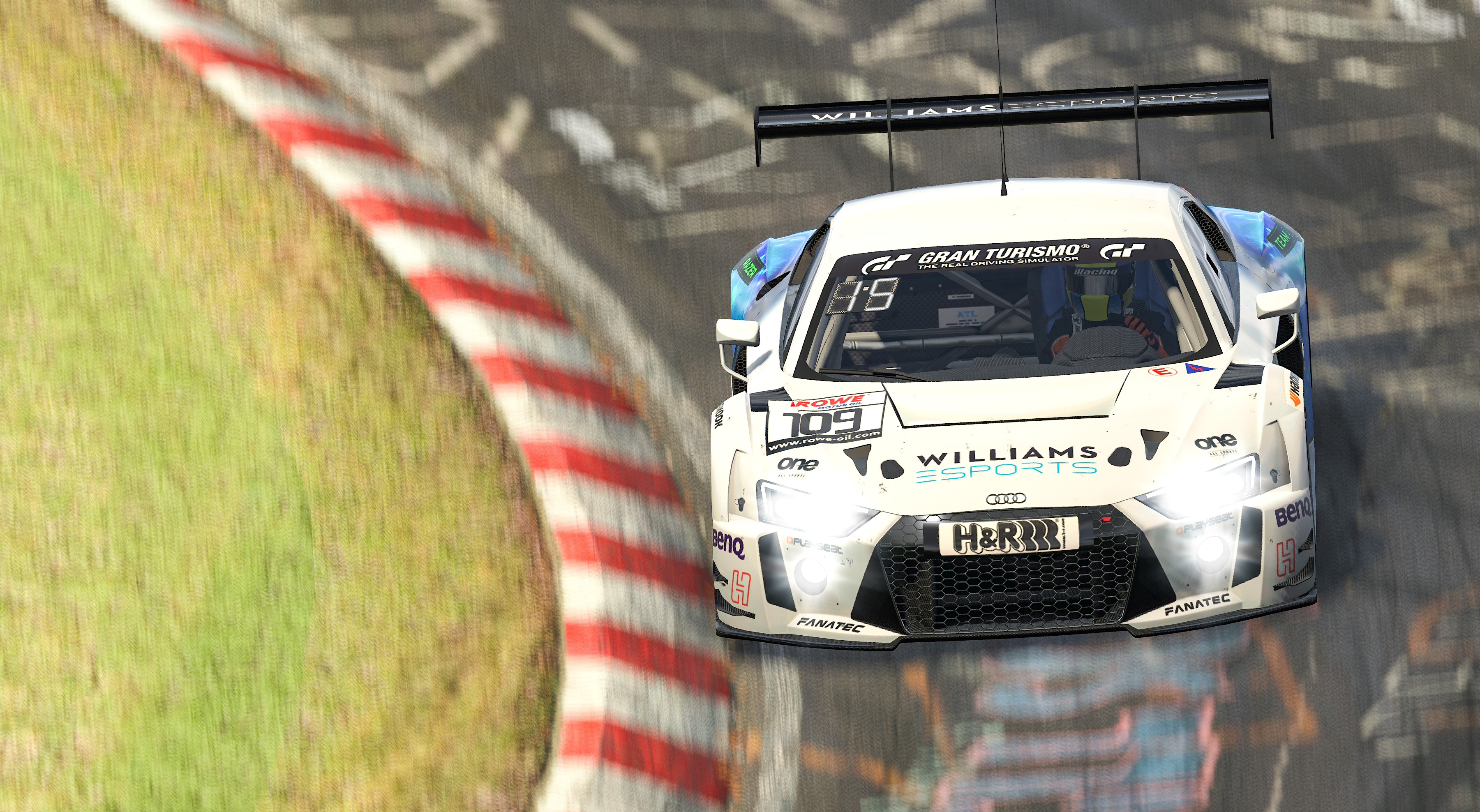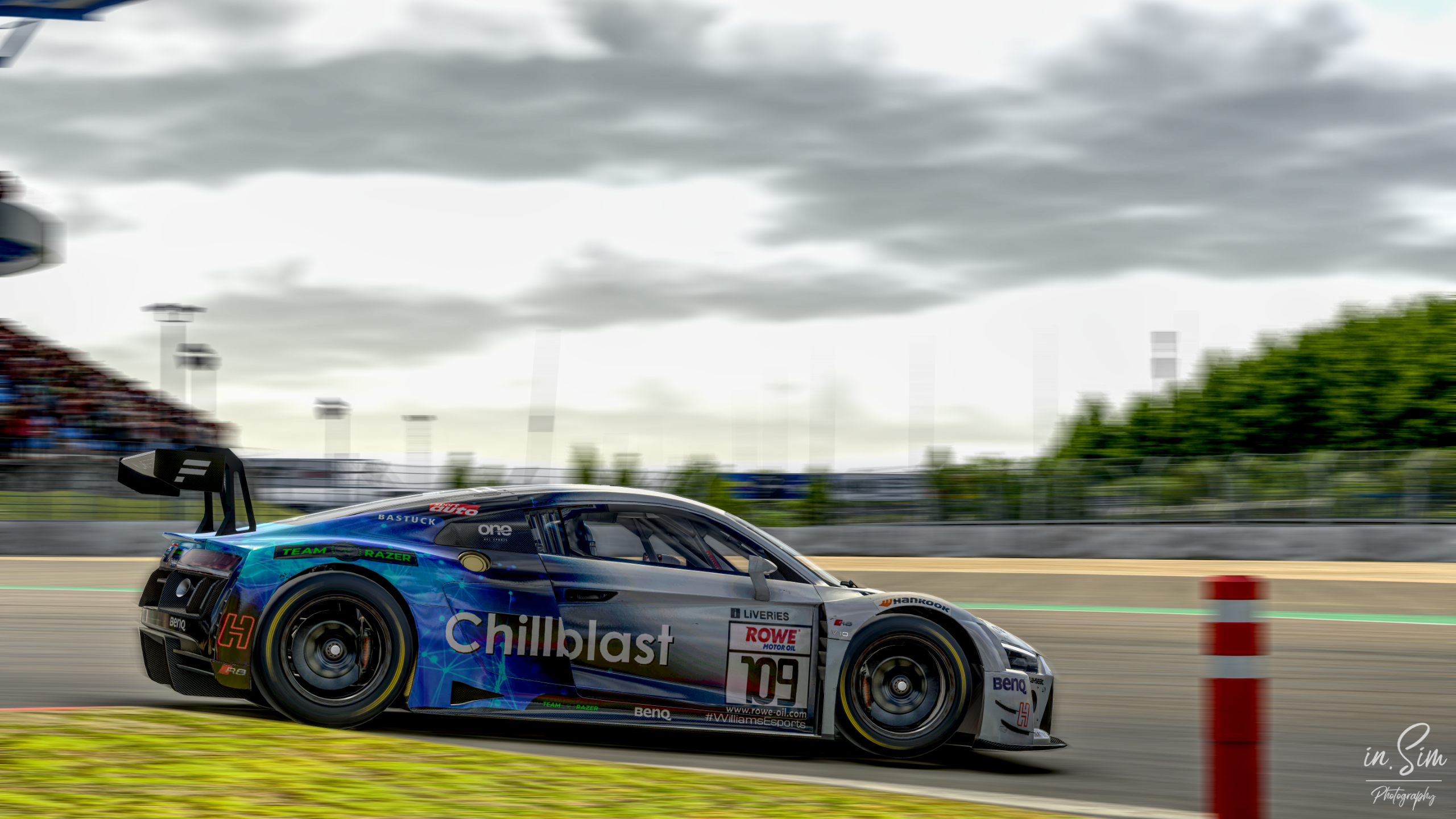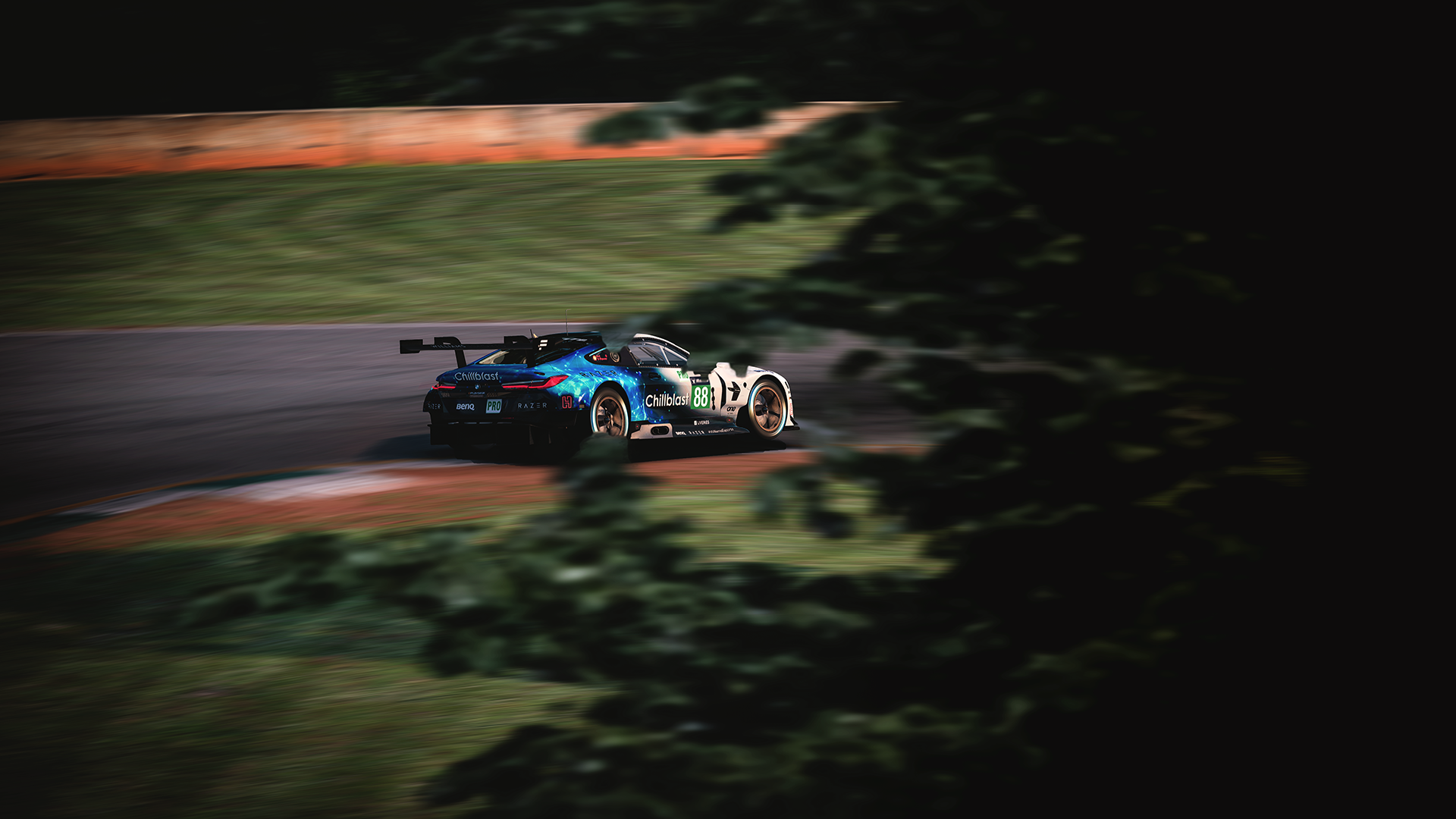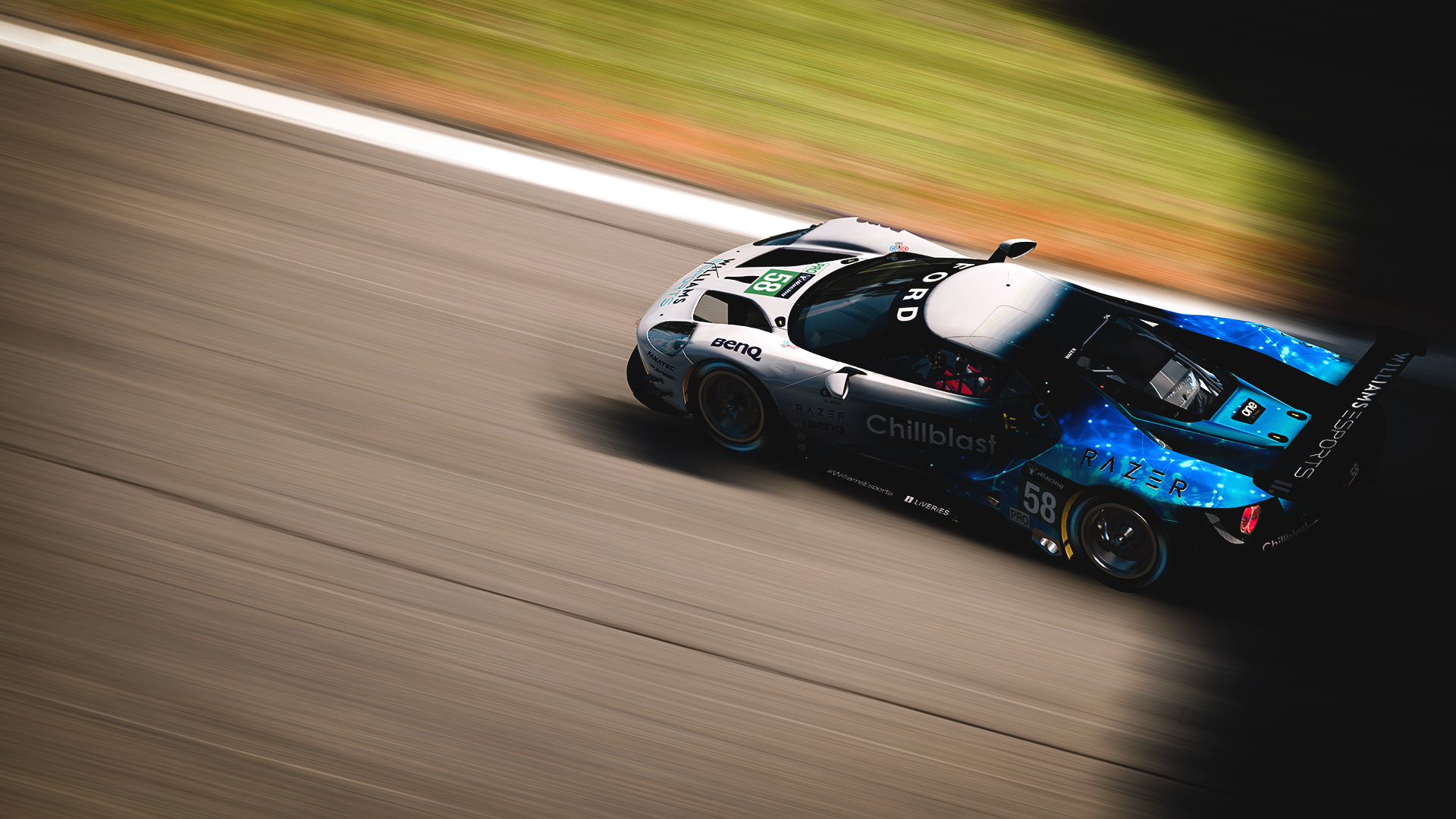You may have watched Formula 1’s Virtual GP last weekend and saw Charles Leclerc win and instantly fallen in love with esports.
Hopefully, you also read the musings of The Race’s Scott Mitchell, who looked at how incredible the Ferrari story is, given Maranello would have only raised an eyebrow at simracing a few years ago, and now it’s the reigning F1 Esports champion.
Ferrari has been like most teams in its approach to esports: it has increased its efforts, but is only interested in the F1 Esports championship.
There’s one sleeping giant on the real-life Formula 1 grid that has taken the exact opposite approach, and it’s benefiting from it.
While Leclerc was pounding in practice laps for the Virtual GP last weekend, the Williams esports squad won the Virtual VLN GT race at the Nurburgring, proving just how diverse the squad is. The first F1 team to establish an esports arm, in 2018, Williams has branched out into almost every championship imaginable.
The list of what it competes in is absolutely mind-boggling: F1 Esports, eNASCAR, Le Mans Esports, MotoGP Esport (as a partner with Suzuki), FIA Gran Turismo Championships (Williams drivers race in it, but the series doesn’t recognise teams), iRacing Endurance Events (Sebring 12h, Nurburgring 24h, Le Mans 24h), Porsche Esports Supercup, WTCR Esport, SRO/World GT Esports (including what used to be Blancpain), ADAC GT Masters Esport, iRacing Rallycross World Championship, DiRT World Championship, WRC Esport and the Forza Racing Championship (official Xbox series run by Microsoft).

Only Red Bull gets close to Williams’s level of involvement in esports as it competes in a few championships outside of F1. But it’s nowhere near Williams’s breadth of series, and definitely not cross-discipline – even though the World Rally Championship is run by a parent company of Red Bull.
“Everyone has an eye on their future fanbase and we’d really like our fanbase to keep growing,” says Steven English, head of creative services at Williams.
“As a team, we’re structured a little bit differently to the other F1 teams. We don’t have a massive global automotive manufacturer or drinks company behind us, we are essentially an independently run family business. A lot of our funding has always come through sponsorship and not a parent company.
“Esports has become important to us because we need the companies that sponsor us to reach the audience they need to and to get the best value they can from doing it.
“So from that point of view, the decision to enter esports was a marketing decision, but it’s also a fanbase decision, because there are racing games out there that sell in excess of 7 million copies.
“Our team is diverse across all of esports. You add up all the participants of all the games we are active in and you must be in the 10s of millions. That’s a massive pool of people who could be our future fans.
“This is the demographic that everyone wants to reach, every brand, every sport in the world has been struggling to reach that younger generation because they don’t watch TV in a traditional way. They have so many options for how they chose how they want to engage that it’s very difficult to reach them.”

It’s more straightforward for teams in other sports to exploit the esports audience. In football, a top team would deal with FIFA, in basketball it’s the 2K franchise.
But when it comes to racing esports most major championships have some sort of individual sim activity – some community-driven, some of them played by hundreds of thousands of people, some for F1, some for the VLN championship.
It’s so diverse that it provides a conundrum for F1 teams. Back the F1 series and miss out on all of the smaller championships, or commit time, money and effort to learning about those smaller championships, finding drivers, monitoring progress and reward? It’s a tough call.
Williams is definitely at the latter end of the spectrum, and no one can take away from how seriously and methodically it has approached its simracing activities.
“From the beginning, it was a conscious decision to spread ourselves as far as we could,” adds English.
“We’re aware we are new at this and we have to build it credibly. If we turned up and finished 18th in every race we do because the guy who’s driving for us has a lot of YouTube followers – alright there’s value there – but that’s not going to help us with our credibility” :: Steven English
“We were quite naive in the beginning in the sense that we didn’t have experience in esports or sim racing so we turned up and went ‘right, who is the person to talk to, who is the organiser in this sector’, and there isn’t one. In sim racing there’s so many games that are popular and each have their own strengths.
“For us, if we said ‘we’re just going to do F1 Esports because we’re an F1 team and that’s all we’re going to do’, that’s actually really limiting the objective of what we’re trying to do in esports.
“We don’t want to miss the boat, saying ‘we’ll do these three championships’ and then another one takes off. You take something like Fortnite, it’s massively impressive, the numbers, the prize money, the participation, but it’s an independently created thing.
“What we don’t see or talk about is the other 100 similar titles that didn’t catch on like Fortnite has. The difficulty in a way is that we’re trying to force that growth, we’re trying to pick the one that will grow. It’s not the way the other titles that are now the biggest in all of esports got that way. That’s the challenge.”

Williams has approached the blanket esports participation as it would in real life, by getting the best personnel possible. It immediately ruled out employing drivers because they have big streaming numbers on YouTube (although those that do are obviously a bonus), but the priority is winning. Esports ace Javier Guerra heads up the programme alongside English, and if there’s something they don’t know about a championship, they find someone who does.
Picking drivers is a tough one because of the talent v number of followers argument, but hiring a load of what those inside of the paddock might call tuggers (slow drivers) just because they offer a big following, would undermine it’s esports targets, claims English.
“On the whole, it’s competitive driven, the number one goal is always to try and win in all of the stuff we’re in, so we want the best drivers we can get,” he says.
“The amount of time you have to put into these games to be at the top level is unbelievable, and it is very difficult to balance that with real life. A lot of the esports competitors fund it through streaming content.
“That allows them to spend the time on the game to be able to practice to be able to stay at the top. That model still exists and there are teams out there who will sign drivers based on the content value, how many followers they have and/or what sponsorship that brings.
“We made a decision to steer away from that in the beginning, to go out there and find the best drivers we can to have the best chance of winning.
“Because the first priority for us was to build an authentic and credible name for ourselves in what is a new area for us. Simracing is not a new area, there are teams that have been around for 20 years or more and esports is obviously not new.
“We’re aware we are new at this and we have to build it credibly. If we turned up and finished 18th in every race we do because the guy who’s driving for us has a lot of YouTube followers – alright there’s value there, but that’s not going to help us with our credibility.

“We try and sign the best drivers we can, and if they don’t perform, yes, their seat is at risk. If there’s someone else who can do a better job, there’s a risk we’ll sign that person. It’s a competitive sport just like real-life. It’s all about performance and the fastest frover should win or at least get the opportunity.”
There’s proof of Williams approach above. The biggest esports series in terms of prize pot in motorsport right now is the eNASCAR iRacing championship, sponsored by Coca Cola and with a $300,000.
This year, Williams signed the 2017 champion Ryan Luza, and he has two early wins in the 2020 championship, plastering the Williams logo all over victory lane in the likes of Bristol, Tennessee, somewhere you would argue Williams would struggle to access otherwise. F1 isn’t exactly popular in the deep south.
The fact it’s branched out into rallying, rallycross and MotoGP is further prove Williams is ahead of the curve. Its logos wouldn’t be seen there either otherwise, and as esports continues to grow its activities are only going to make it more attractive to sponsors. That could help its F1 plight and activities with Williams Advanced Engineering.
Fundamentally, for a small amount of resource – irrelevant of marketing or profit – Williams is everywhere in esports, supporting small communities and giving drivers a big name to compete under. If anything, it is spreading the popularity of an already much-loved underdog team. And who knows, if esports continues to grow and expand, it could help secure Williams’s future, or even help it to move up the real-life F1 grid.





